
Harry Baker
Harry is a U.K.-based senior staff writer at Live Science. He studied marine biology at the University of Exeter before training to become a journalist. He covers a wide range of topics including space exploration, planetary science, space weather, climate change, animal behavior and paleontology. His recent work on the solar maximum won "best space submission" at the 2024 Aerospace Media Awards and was shortlisted in the "top scoop" category at the NCTJ Awards for Excellence in 2023. He also writes Live Science's weekly Earth from space series.
Latest articles by Harry Baker
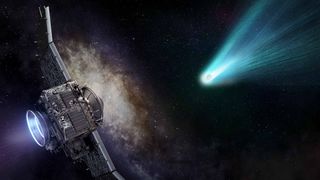
Interstellar comet 3I/ATLAS is rapidly moving away from us. Can we 'intercept' it before it leaves us forever?
By Harry Baker published
3I/ATLAS has passed its closest point to Earth, meaning we will soon lose sight of it for good. Some scientists want to send a spacecraft to chase down the alien comet — or the next interstellar object.
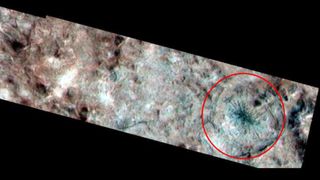
Spiders on Jupiter? Scientists uncover secret origins of arachnid-like 'demon' lurking on gas giant's moon.
By Harry Baker published
A new study reveals the likely origin of a mysterious spider-like pattern first spotted on Jupiter's moon Europa in 1998. The finding could have implications for a NASA spacecraft en route to the frozen world.
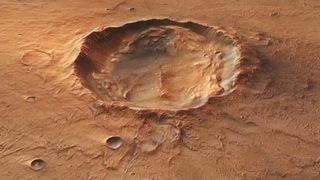
City-size 'cosmic butterfly' carved into Mars' surface contains traces of ancient water
By Harry Baker published
The European Space Agency has released new images of a rare "butterfly" crater on the Red Planet. The bug-like structure sports a pair of smooth, rocky wings, which were likely "fluidized" by buried Martian ice.
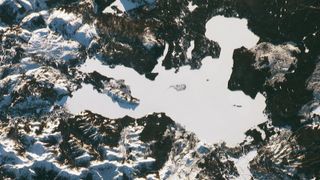
Deep snow blanket transforms Yellowstone Lake into a giant white void
By Harry Baker published
Earth from space A 2022 astronaut photo shows a thick blanket of snow covering Yellowstone Lake, transforming the frozen body of water into a featureless white void. But below the ice lie some of Earth's hottest hydrothermal vents.

Live Science crossword puzzle #24: Elemental particle associated with light — 11 down
By Harry Baker last updated
Science crossword Test your knowledge on all things science with our weekly, free crossword puzzle!

Live Science crossword puzzle #23: Distance around the edge of a circle — 6 down
By Harry Baker published
Science crossword Test your knowledge on all things science with our weekly, free crossword puzzle!

'Necessary for the future of humankind': Who was honored at the first-ever Global Space Awards?
By Harry Baker published
The winners of the inaugural Global Space Awards were recently announced at a star-studded ceremony at London's Natural History Museum. The event championed innovation and sustainability, while also celebrating the life of a late NASA astronaut.

Rare 'sunglint' transforms Alabama River into a giant 'golden dragon'
By Harry Baker published
Earth from space A 2023 astronaut photo shows the moment the Alabama River briefly morphed into an undulating golden serpent, similar in shape to a Chinese dragon. This temporary transformation was the result of a rare mirror-like phenomenon known as a "sunglint."

Live Science crossword puzzle #22: Subatomic particle with a positive charge — 13 across
By Harry Baker published
Science crossword Test your knowledge on all things science with our weekly, free crossword puzzle!

Giant sunspot on par with the one that birthed the Carrington Event has appeared on the sun — and it's pointed right at Earth
By Harry Baker published
A massive new sunspot complex, dubbed AR 4294-4296, has emerged on the sun and is facing directly at Earth. The dark patch is on par with the infamous sunspot that birthed the 1859 Carrington Event — but, for now, it's staying quiet.

Trio of 'black mesas' leftover from Paleozoic era spawn rare sand dunes in the Sahara
By Harry Baker published
Earth from space A 2023 astronaut photo shows three dark hills, or mesas, towering above part of the Sahara desert in southern Mauritania. The structures are remnants of a single Paleozoic era formation, and have helped to create a series of striking sand dunes.
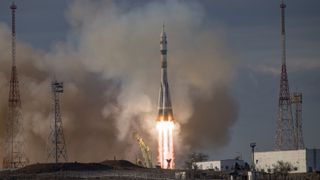
Russia accidentally destroys its only working launch pad as astronauts lift off to ISS
By Harry Baker published
The recent launch of a Soyuz rocket carrying three astronauts to the International Space Station has caused significant damage to Russia's only launch pad capable of sending humans into space.

Live Science crossword puzzle #21: NASA rover that landed on Mars in 2012 — 16 across
By Harry Baker published
Science crossword Test your knowledge on all things science with our weekly, free crossword puzzle!
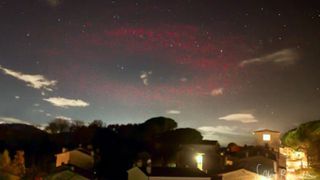
Bizarre, UFO-like halo of red light appears over small Italian town — for the second time in 3 years
By Harry Baker published
An eerie new photo shows a giant red ring shining above Possagno, near the Italian Alps. The eye-catching image is almost identical to one taken in the same town in early 2023.
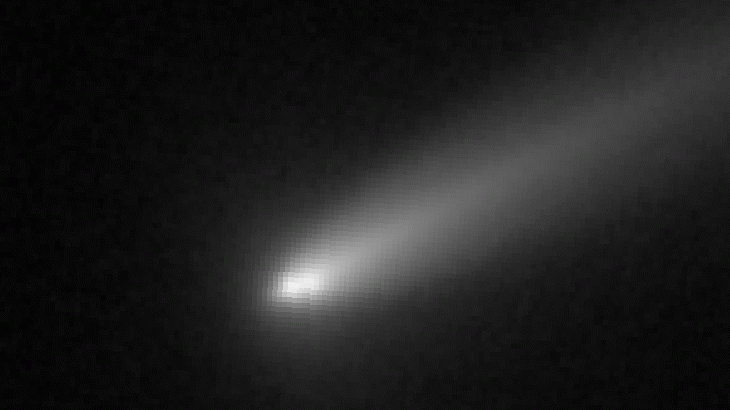
RIP 'other ATLAS': Watch the doomed comet explode into pieces in incredible new images
By Harry Baker published
Stunning new photos show the pieces of the "other ATLAS," C/2025 K1, breaking apart in space after the golden comet suddenly exploded earlier this month.
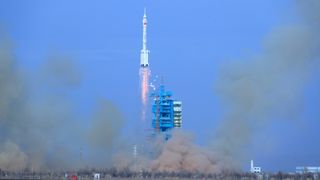
Marooned no more! Stranded Chinese astronauts finally have a way home following launch of unmanned 'lifeboat'
By Harry Baker published
China has launched an unmanned "lifeboat" to the Tiangong space station, ending a month-long fiasco. The spacecraft will eventually ferry home the marooned Shenzhou-21 crew, who have been stuck without a return capsule for over a week.

Twin tornadoes tear perfectly parallel tracks through Mississippi during deadly 'superstorm'
By Harry Baker published
Earth from space A satellite photo from March shows a pair of parallel tornado tracks in Mississippi, leftover from a deadly storm system that spawned over 100 twisters in more than a dozen U.S. states.

Live Science crossword puzzle #20: Largest contiguous land empire in history — 3 down
By Harry Baker published
Science crossword Test your knowledge on all things science with our weekly, free crossword puzzle!
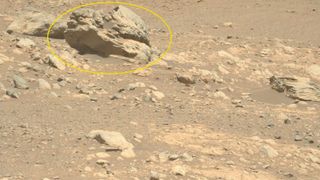
Odd-looking rock on Mars is totally alien to the Red Planet, Perseverance rover finds
By Harry Baker published
NASA's Perseverance Mars rover recently came across an odd rock, dubbed "Phippsaksla," that is unlike anything else the robot has found on the Red Planet. It turns out that it probably isn't from our neighboring world and likely crashed on Mars instead.

Secretive SpaceX satellites operated by US government are shooting disruptive radio signals into space, astronomer accidentally discovers
By Harry Baker published
An amateur astronomer has accidentally uncovered a series of puzzling radio signals coming from SpaceX's government-operated "Starshield" network. The signals overlap with protected frequencies and could disrupt other nearby spacecraft, experts warn.

'From another world': 3I/ATLAS photobombs a galaxy and shows off its multiple tails in stunning new image
By Harry Baker published
An incredible new image shows the multi-tailed alien comet 3I/ATLAS shooting past a distant galaxy in the night sky. The stunning scene is a reminder of the object's perfectly natural interstellar origins, photographer Satoru Murata claims.

Extreme bloom of toxic algae swirls in Nevada's 'Pyramid Lake'
By Harry Baker published
Earth from space A 2024 satellite photo shows an unusually active bloom of toxic cyanobacteria swirling in the water of Nevada's Pyramid Lake. Research suggests that the algae has been blooming there for at least 9,000 years.
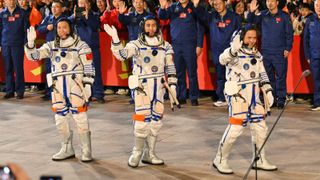
Three more Chinese astronauts are now stranded in space following successful rescue of their colleagues
By Harry Baker published
The Shenzhou-21 crew has been marooned on China's Tiangong space station after three of their colleagues were brought back to Earth in the wrong spacecraft. For now, the astronauts have no safe way of returning home.

Mars orbiter narrows down exact path of interstellar comet 3I/ATLAS
By Harry Baker published
Scientists from the European Space Agency have significantly narrowed down the trajectory of the interstellar visitor 3I/ATLAS thanks to data from the alien comet's recent flyby of Mars, allowing for more accurate future observations.
Get the world’s most fascinating discoveries delivered straight to your inbox.
